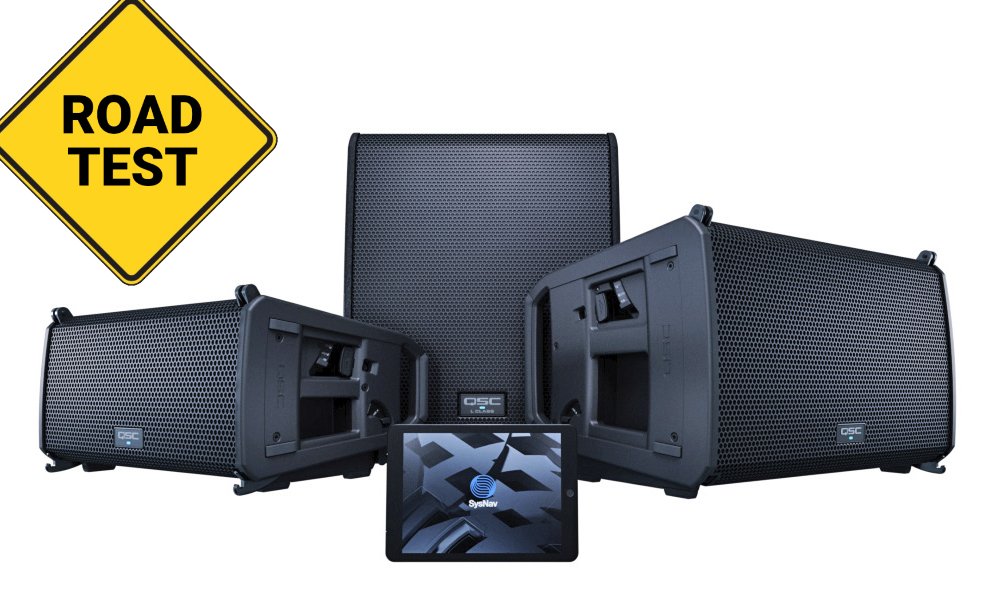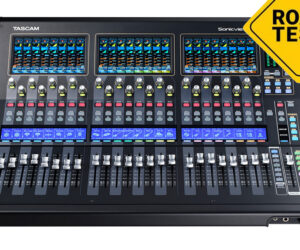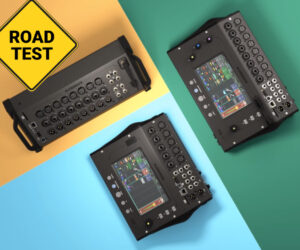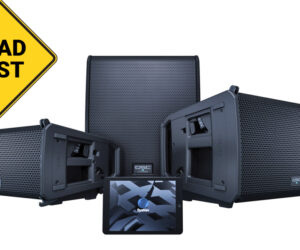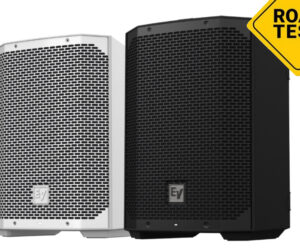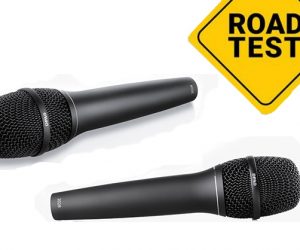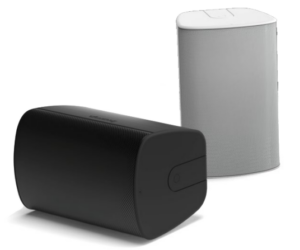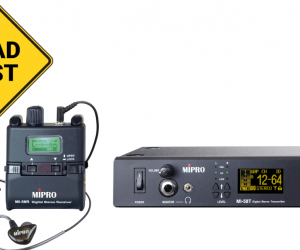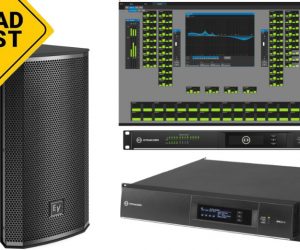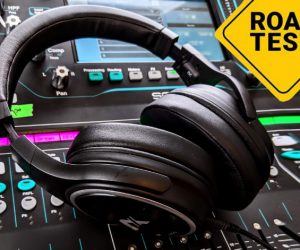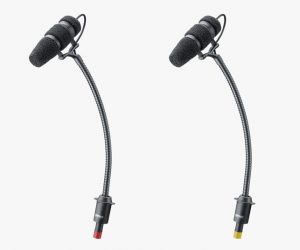The new L Class from QSC is comprised of two line array loudspeakers, the LA108 (8-inch) and LA112 (12-inch), as well as the accompanying LS118 single 18-inch direct-radiating subwoofer. The L Class predecessor, the KLA series, catered to mobile entertainers, performance venues, houses of worship, A/V rental, and smaller production companies. The objective of L Class was taking the best of KLA, such as light weight and the ability to rig a system without tools or external hardware, and offer higher performance, networking, advanced DSP for simplified operation, and adjustable splay angles.
The two-way active line array loudspeakers with onboard DSP are neither constant curvature nor fully articulated. Instead, they offer three splay options: 1.5, 6, and 12 degrees. Once flown or stacked, the companion AWARE technology uses infrared sensors to detect how many elements are deployed and where each box is located within the array. The auto-optimization feature then uses this information to apply low-frequency FIR, IIR, and all-pass filters.
The three splay options keep the design decisions simpler with “short, middle, and long throw” choices and avoid the possibility of 0-degree angles. While users familiar with line arrays might find this limiting, QSC says, “Extensive calculations and simulations of array sizes and venues likely to be encountered by users of L Class loudspeakers were done.”
Unfortunately, I didn’t find any published data on this. That said, while more splay options would allow for users to potentially dial in even more consistent vertical coverage, simplifying to three choices is easier for less technical operators.
The LA108 and LA112 include the proprietary LEAF (Length-Equalized Acoustic Flare) waveguide as well as the ergonomically designed, single-operator RapidDeploy rigging system and AWARE (Automatic Wireless Array Recognition) system intelligence that also provides one-button single box or full array optimization.

The LS118 active subwoofer’s onboard DSP further optimizes and protects system performance while also offering added capabilities such as the ability to array two units in a cardioid arrangement, maximizing low-frequency output in front while minimizing unwanted energy around the sides and rear of the system. DEEP mode provides additional low-frequency extension and driver excursion processing.
All models also include the company’s Acoustic Linear Phase (ALP) design that’s designed to provide cohesive phase response when deployed with other QSC loudspeakers in a given environment. And, they feature daisy-chain connections for analog and digital audio as well as AC power (PowerCON TRUE1). Onboard Dante connects L Class to networked AV systems and connected stages.
Both line array loudspeakers can be deployed using dedicated array frames, ground-stacked (array frame combined with optional sub-stack adapter) or mounted in one of two pole cups using loudspeaker stands or poles of various lengths. The LS118 can be deployed in both horizontal and vertical orientations in a ground-stack configuration or using one of its two pole receptacles.

The onboard processing can be controlled by either the control panel on any of the loudspeakers or by the new SysNav application currently available for iPadOS and Windows. SysNav is designed to be an all-in-one program for the design, monitoring, and control of L Class products. The AIM section of the app allows for basic loudspeaker prediction in a side-cut view with SPL lines at a few specific frequencies. The control page shows an overview of the system including each loudspeaker’s input level, limiting, and output gain. Once an array is selected, HF shelving filters can be adjusted from -6 dB to +3 dB in 0.5 dB increments at 1.5 kHz or 5 kHz.
While I like the features that are currently available in SysNav version 1.1.0026, I would like to see additional features such as multiple array prediction, a horizontal coverage view and simulated response from the high-frequency shelf adjustments. The version I’m using currently doesn’t have the EQ tab, although QSC indicates it should be coming soon, which I believe will add significant value. This addition will unlock the DSP power in each loudspeaker and will allow single-box EQ adjustments with no front-end processor.
Further, I expect the software will be updated and improved over time based on customer feedback. Be sure to check out the current SysNav application at qsc.com to see if it has the features you’re looking for. The demonstration mode provides an accurate feeling of using it with real loudspeakers.
Getting To Work
I field tested both the L Class package in two locations, a rehearsal room and a college theater. I began with three LA108 elements per side on stands with two KS118 subs in the center (LS118 subs were not available at the time of review). All six line array boxes were powered by a single 120-volt circuit.
Stacking the LA108s on the stands was not physically difficult for the first two boxes, but I found the third more challenging as it was over my head and more difficult to line up the hook system. Alternatively, when hanging the loudspeakers from an array frame, the hook system made rigging as a single person much easier compared to similar products. Once they were all stacked and connected together, I used the optimize button on the back of the bottom loudspeaker on each array.
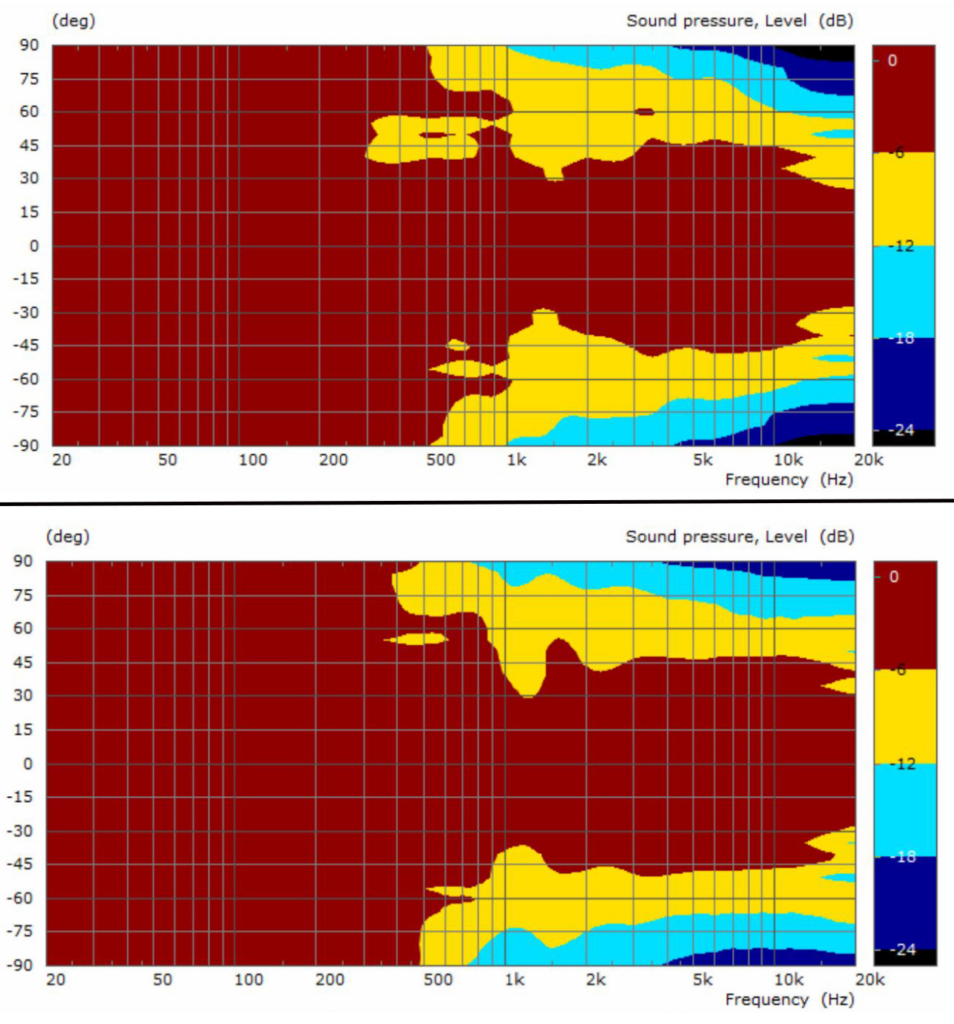
(below).
After a quick firmware update and restart, I could monitor each loudspeaker individually in SysNav and adjust the HF shading. I started my listening with no additional EQ besides the automatic optimization. Normally I wouldn’t put much emphasis on the default frequency response, but the target clients for these likely won’t change it much.
Equidistant from the two stacks, the LA108s sounded even in the lows and mids, but at least to my ears, were a little aggressive on the high end. Specifically, there was a noticeable bump centered at 10 kHz. I attempted to tame this with the 5 kHz shelf but ended up affecting other frequencies I didn’t want to.
Regardless of the tuning of the on-axis response, I found the off-axis behavior of the array to be very well-behaved. The HF response was very consistent all the way to 45 degrees off-axis and then tapered off gradually towards 90 degrees. What I heard and the measurements I took both align with the published horizontal coverage in the spec sheet. If you’re willing to tune the array, this horizontal consistency far outweighs any nitpicking about the default tuning.
In terms of SPL, I found the three-per-side rig of LA108s to be quite capable for its size, particularly for speech applications. The tuning of the HF response provided clarity for spoken word but sounded somewhat harsh with loud music content. When paired with a subwoofer, they sounded balanced, even
at high SPL.
Switching to two LA112 elements per side, the most obvious difference was the frequency response going lower due to the driver size. The louder and lower bass frequencies made the LA112 sound more pleasant when pushed louder as compared to the LA108.
The need to pair a subwoofer with the LA112 is situation dependent. For smaller rooms, you might be able to compensate for the lack of a subwoofer with some low-frequency EQ. That being said, electronic music, hip-hop, etc., will definitely need a dedicated subwoofer to attain the desired sonic signature.
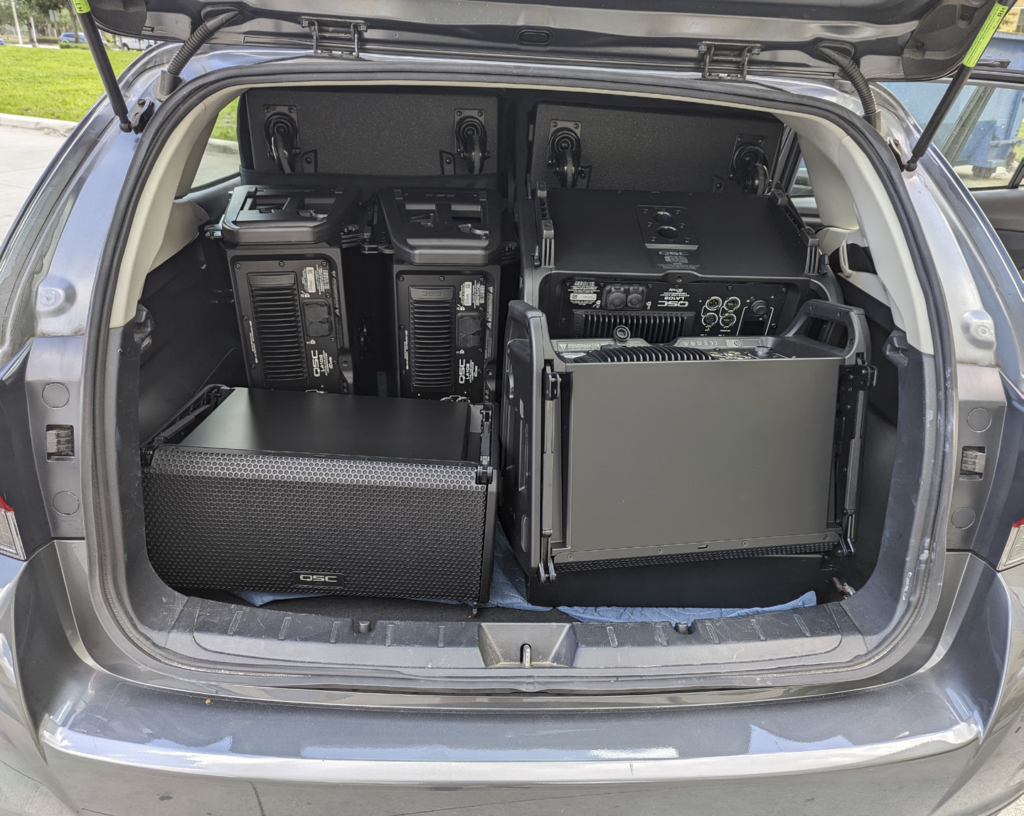
While SPL is important, “SPL-per-size” is also an important metric for the target client of this system. To show the portability of this package, I loaded it into my Subaru Impreza hatchback – two KS118 subs, with LA108 elements, the fly bars, jumper cables, my 1510, and a backpack. For transporting the components individually, QSC offers individual carrying cases that offer protection. For those looking to transport
them as a hanging array, there are options available via case manufacturers.
In conclusion, the QSC L Class is definitely on the mark for its target customers and market segments. It isn’t trying to compete with “tier 1” touring line arrays and instead strikes a balance between offering advanced features and keeping it simple for quick deployments. The value of the L Class lies in the simplicity and versatility it offers for the intended user.
U.S. MAP: LA108 – $2,399; LA112 – $3,199; LS118 – Not Yet Available


